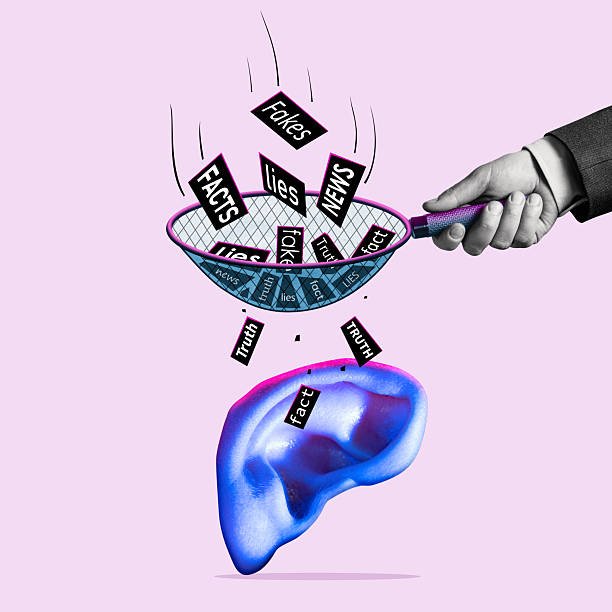Media Bias News
In an age the place info is at our fingertips, the media exerts a strong affect over public opinion and discourse. However how dependable is that this info? Media bias information has grow to be a essential subject of debate as audiences try to distinguish between goal reporting and skewed narratives. This text goals to delve deep into the nuances of media bias, serving to you uncover hidden agendas in reporting and perceive easy methods to devour information extra critically.
Understanding Media Bias
What’s Media Bias?
Media bias refers back to the perceived or precise partisan perspective of journalists and information organizations. Whether or not it’s via deliberate distortions, selective reporting, or emphasizing sure viewpoints over others, media bias can form our understanding of present occasions. It isn’t merely about proper or left-leaning views; it spans a spectrum that features company pursuits, cultural biases, and sensationalism.
Forms of Media Bias
-
- Choice Bias: This happens when information retailers select to cowl sure tales whereas ignoring others. As an example, if a information supply solely highlights violent protests and neglects peaceable demonstrations, it presents an incomplete image of societal sentiments.
-
- Omission Bias: Info that’s essential to understanding a narrative could also be unnoticed totally. A report on immigration would possibly point out crime charges however fail to debate contributing elements like financial circumstances or historic context.
-
- Framing Bias: The way in which a narrative is offered can affect viewers notion. For instance, calling a bunch “protesters” versus “rioters” frames the narrative in dramatically totally different lights, regardless of the underlying occasions being comparable.
-
- Affirmation Bias: Information retailers could spotlight info that conforms to their narrative whereas ignoring contradictory proof. This may create an echo chamber impact the place audiences solely hear what they already imagine.
The Impression of Media Bias

Shaping Public Opinion
Media bias isn’t just a theoretical concern; it has real-world implications. Biased reporting can affect public opinion, sway elections, and even have an effect on policy-making. The framing and collection of information tales form voters’ understanding of candidates and points, in the end figuring out the result of democratic processes.
Fostering Division
In societies rife with polarization, media bias typically exacerbates divisions. When folks solely devour information that aligns with their beliefs, it results in a fragmented understanding of actuality, decreasing the possibilities of constructive dialogue and rising hostility between differing viewpoints.
Analyzing Media Bias Information
Recognizing Bias in Reporting
Detecting media bias is an important talent for right this moment’s knowledgeable citizen. Listed here are some methods to establish bias in information articles:
-
- Consider Supply Credibility: Not all information sources are created equal. Study the outlet’s monitor report for accuracy and impartiality. Web sites like Media Bias/Reality Test will help you gauge the bias of various organizations.
-
- Cross-Reference Info: At all times seek the advice of a number of sources when researching a subject. This typically helps to disclose a extra balanced image, as totally different retailers could report various particulars and views.
-
- Analyze Language Decisions: Learn between the strains. Descriptive selections like “freedom fighter” versus “terrorist” reveal underlying biases. Equally, discover whether or not the piece depends on emotional language or factual info.
-
- Test for Unattributed Claims: Experiences that reference nameless sources or lack information to assist their assertions could point out sensationalism or bias. Dependable journalism usually substantiates claims with direct sources or verifiable information.
The Position of Social Media
Amplifying Bias
Social media platforms have drastically modified how folks devour information. They typically function echo chambers the place bias is amplified. Algorithms promote content material that aligns with customers’ preferences, resulting in selective publicity and reinforcing current biases.
Combating Bias via Social Media Literacy
To fight the consequences of media bias on social media, customers should grow to be essential customers of knowledge. Methods embrace:
-
- Observe Various Sources: Increase your social media circles to incorporate voices from totally different views. Range in info sources can foster a extra rounded understanding of points.
-
- Have interaction in Discussions: Constructive debates will help unravel biases and produce numerous considering to the forefront. Participating with those that maintain opposing views can supply insights that enrich your perspective.
-
- Reality-Test Earlier than Sharing: Earlier than posting or sharing articles, confirm the knowledge via respected fact-checking web sites like Snopes or FactCheck.org.
The Way forward for Media and Accountability
The Push for Transparency
As audiences develop more and more conscious of media bias, there’s stress on information organizations to enhance transparency. Many retailers are adopting practices that disclose potential conflicts of curiosity and the editorial processes behind their tales. This shift towards accountability is pivotal in rebuilding belief.
Empowering Journalistic Integrity
Encouraging moral journalism practices is important for combating media bias. Journalists should decide to thorough, correct reporting and try to offer a balanced view. Supporting organizations that uphold these values can foster a more healthy media panorama.
Actionable Insights for Readers
-
- Keep Knowledgeable: Dedicate time to learn a wide range of information articles from a number of sources. Goal for a wholesome mixture of views.
-
- Educate Your self and Others: Share data about media bias and demanding considering expertise with family and friends. An knowledgeable neighborhood is a strong one.
-
- Advocate for Transparency: Assist media literacy initiatives and maintain information organizations accountable for his or her reporting practices. Demand larger requirements for moral journalism.
-
- Make the most of Dependable Instruments: Leverage assets and instruments that assess media bias to raised perceive the slant of the articles you learn.
Conclusion
In a world the place media bias information is a pervasive problem, turning into an knowledgeable client is crucial. By creating essential considering expertise and actively in search of numerous views, you may navigate the complicated media panorama with confidence. Armed with the correct instruments and data, you may contribute to a extra balanced and knowledgeable discourse, breaking the cycle of bias that always clouds our understanding of the world.
By taking these actionable steps, you empower your self and others to uncover hidden agendas in reporting. Media bias could also be an ongoing problem, however consciousness might be step one towards reclaiming a extra goal and truthful media panorama.







